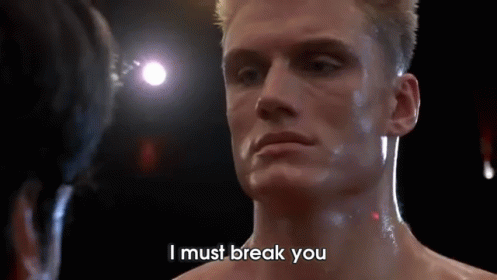
The Powerlifter’s Arsenal: Leveling Up
With the basics, the key is to stay simple and cheap. As with all hobbies, it makes little sense to invest heavily in equipment until you’re consistent, and know you’re sticking with it for the long haul. Once you near intermediate level, you likely will not achieve significant leaps in progress through improving your form, so now is the time to buy your way to new PRs.
Chalk It Up

Certainly not a significant expense, gym chalk still seems best reserved for more experienced lifters, who lift at a gym that even allows the use at all. Likely when you first start, your grip strength is the least of your concerns, so there is little need to deal with the hassle and mess of chalking up for your lifts.
Once you’re pushing the limits of your strength, instead of mostly learning proper form, you’ll want to chalk early and chalk often. Chalk will be your best friend, especially if you are prone to excessive sweating. Not only can you chalk your hands for a more secure grip, but also your upper back. If I’m not at a powerlifting gym, I’ll get weird looks when I chalk up my back, but it helps a great deal to keep a bar “stuck” to your back when squatting or keeping you from sliding on a bench while bench pressing.
Brace Yourself
The logical first major purchase for anyone striving to follow The Whey Of Brodin: quality lifting belt. It can take years to work in a belt properly, so the earlier you start, the better. A good weightlifting belt will likely protect your back and help you to stay more upright while squatting, usually by helping you to learn how to brace your core correctly. How much a belt helps seems to be a hotly debated topic, and can vary person to person. While writing this post, I did some digging and stumbled upon a post called The Belt Bible which does a deep dive into the available research into the use of belts for weightlifting, and looks to be an excellent resource for anyone who is on the fence about buying one.

My choice was the 10mm Inzer Forever Buckle Belt, which is certainly true to its name and can likely become a family heirloom to pass down through the centuries. Or at least you can rest assured you’ll break long before that belt will. There are tons of varieties when it comes to belts, but I kept it basic with a single prong belt. Lever belts are popular, but I’ve known too many people who’ve had those fail on them, and I’ve tried double prong belts, but they can be hell to pry yourself out of when you can barely function after a max effort lift.
Maximizing Squat Depth
Chucks won’t help with ankle mobility, a very common issue, which can prevent you from hitting the proper squat depth or requiring an excessively wide stance to do it. Everyone should work on mobility issues, but Olympic weightlifting shoes can do a lot for your squat form.

I chose the Adidas Adipower Weightlifting shoes, which are very popular among powerlifters and Olympic weightlifters. They’re somewhat pricey but worth the cost of admission. The Adipowers have good arch support, break in, and mold to your feet very quickly, allowing them to do a great job of keeping your feet very stable. It can take some time to get used to sitting back properly, but once you do, your squat will benefit significantly. For those on a tighter budget or just testing the waters, the VS Athletics Weightlifting Shoes are a good alternative, heavier than Adipowers but secure and stable.
Buying your first pair of Oly shoes can be a little daunting, they’re likely to be the most expensive piece of gear you’ll have, and getting the sizing right can be tough. You’ll want to get shoes with a very snug fit, to prevent your foot from moving inside the shoe while you manhandle hundreds of pounds. For most people, the Adipower shoes seem to match up with their normal sneaker size, but I had to size down half a (US) size for the perfect fit.
Kneeds of High Volume Squatters
For a long time, I was skeptical about using knee sleeves while squatting. They seemed like cheating if you’re a raw lifter, as well as a massive pain to put on and take off. Then, like some sort of unhinged masochist, I tried my first high volume squat program: Smolov, a program no human who wants to avoid injury should probably ever do.

The creator of the Smolov program
Squatting heavy four days a week, for what seems like infinite sets and reps, will take its toll on nearly everything. Sore doesn’t begin to describe the fresh hell you’re in for, I squatted so much my knees would get sore, and even feel weak. After barely making it through my first Smolov cycle, I finally gave in and bought myself the most highly regarded knee sleeves on the market: SBD Knee Sleeves. People would always tell me that sleeves will help your squat by “keeping your knees warm,” which I never understood until I experienced it for myself. With them on, I felt so much more comfortable and stable when I would squat, I could push myself even harder, and my progress greatly accelerated.

My only regret with the knee sleeves is not investing in them sooner, but a word to the wise: make sure to take good care of them, few things can stink up a gym bag like sweaty knee sleeves.

Now we’ve covered the best bang for your buck equipment to push you through the most grueling of workouts, next time I’ll go over the more nuanced equipment that will let you move the needle when personal records become few and far between.